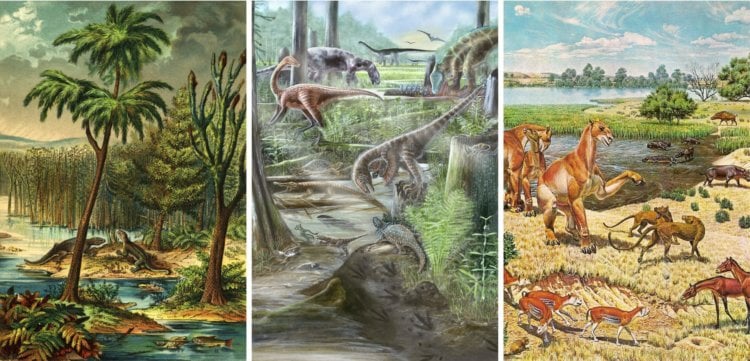A rich variety of land that we see today across the globe — the phenomenon is not new: the diversity of life on land has not changed in at least the last 60 million years ago. Recall that dinosaurs became extinct about 65 million years ago. According to a new study conducted by researchers at the University of Birmingham, the number of species in ecological communities on land increased only sporadically during geologic time. The rapid growth was followed by a plateau that lasted tens of millions of years.

How many species on Earth?
Previously, many scholars have argued that diversity has been steadily increasing over geological time, which would mean that biodiversity today much more than it was millions of years ago. But to create an accurate picture of how did the diversity of life on land, is very difficult, because these fossils are becoming more scarce the further back in history we go. Using modern computing technology that can analyze hundreds of thousands of fossils, we begin to see patterns, which challenge this view.
Researchers from the School of geography, Earth Sciences and environment, University of Birmingham and other institutions in the UK, USA and Australia were able to examine the data of fossils collected by paleontologists for the last 200 years the 30,000 various excavations around the world. Scientists took as a basis the data about terrestrial vertebrates that account for the early appearance of this group, almost 400 million years ago.
It turned out that the average number of species in the ecological community terrestrial vertebrates did not increase for tens of millions of years. The results, published in the journal Nature Ecology & Evolution, shows that the interaction between species, including competition for food and space, limits the total number of species that can coexist.
Lead researcher Dr. Roger Klose said: “Scientists often assume that a variety of types of uncontrolled increases for millions of years, and that diversity is much bigger than in the past. Our research shows that the number of species within terrestrial communities is limited for long periods of time, which contradicts the result of many experiments in modern ecological communities and now we have to understand why.”
One of the reasons why diversity in ecological communities is not increased, may be that resources used by species like the food and space are limited. Competition for these resources can prevent the penetration of new species into the ecosystem and lead to a balance between rates of speciation and extinction. However, after the appearance of the major animal groups, or major environmental violations, such as mass extinction, the increase in diversity may occur suddenly in geologic, not human standards — and behind them again followed by long periods without any increase.
“Contrary to expectations, the greatest increase in diversity in communities of terrestrial vertebrates occurred after the mass extinction that killed the dinosaurs 66 million years ago in the late Cretaceous period. Just a few million years this diversity has increased two to three times compared to the level before extinction, mostly thanks to the impressive success of modern mammals”.
Professor Richard Butler, who was also part of a group, adds that if you understand how the diversity has varied in the past, we would be able to better understand the likely long-term implications of the current crisis of biodiversity.
Do you think the dinosaurs died in vain? Tell us in our chat in Telegram.